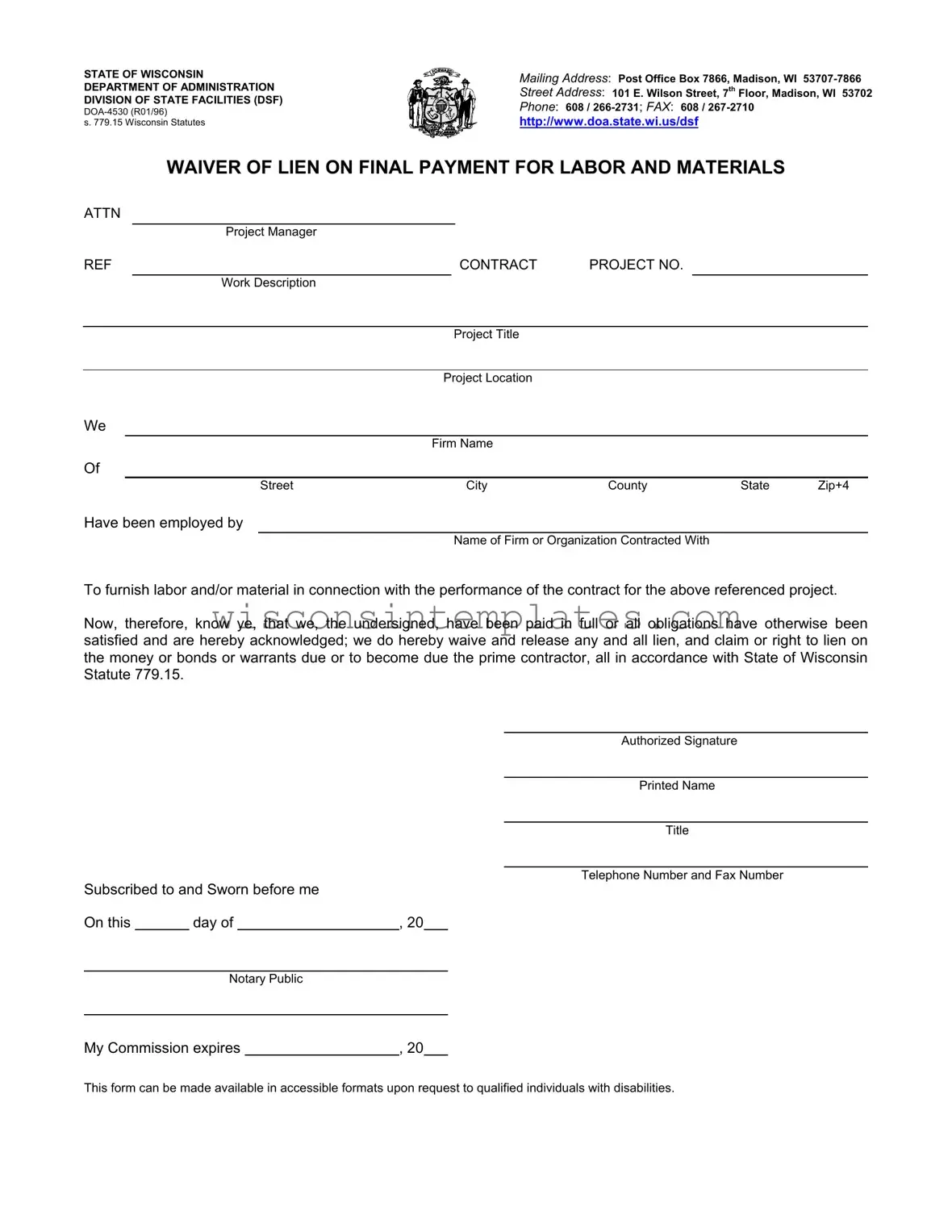The Lien Waiver Wisconsin form is an essential document in the construction and contracting industry, ensuring that all parties involved in a project are protected and aware of their rights. This form serves as a formal declaration that a contractor or subcontractor has received full payment for labor and materials provided, thus waiving any future claims or liens against the property in question. It is crucial for both project managers and contractors to understand the implications of this waiver, as it helps prevent disputes over payments and protects the interests of all parties involved. The form requires specific details, including the project title, location, and the names of the firms involved, ensuring clarity and accountability. Additionally, it must be signed by an authorized representative and notarized to confirm its validity. This process not only safeguards the financial interests of contractors but also fosters a transparent working relationship between all stakeholders in the project. Accessible formats of this form are available upon request for individuals with disabilities, highlighting the commitment to inclusivity within the construction industry.
